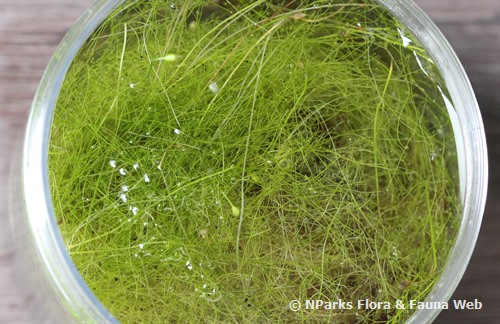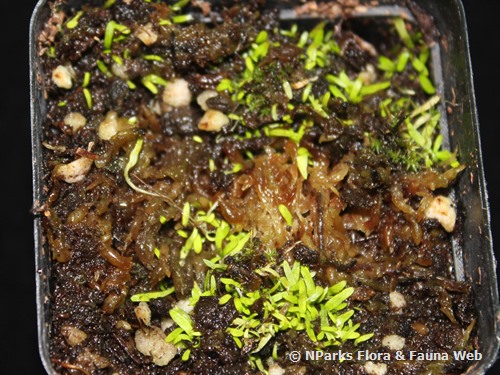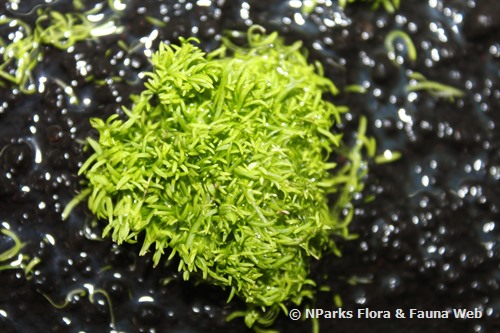
Back
Utricularia gibba L.
| Family Name: | Lentibulariaceae |
| Common Name: | Cone-spur Bladderwort, Floating Bladderwort |
Name
Classifications and Characteristics
| Plant Growth Form | Aquatic & Hydrophyte (Emergent Aquatic, Submerged Aquatic) |
|---|
Biogeography
| Native Distribution | North America, South America, Africa, Asia, Australia |
|---|
Description and Ethnobotany
| Growth Form | Submerged or sometimes emergent carnivorous plant which forms dense mats. |
|---|---|
| Foliage | Leaves are 3-10 mm long and borne on a mass of thin, tangled stems. Bladders are modified leaf organs which help to trap prey. The movement of prey swimming nearby causes the trigger hairs located at the opening of the bladder to bend and trigger the bladder to suck in water. The prey is sucked in along with the water and a trap door closes to prevent prey from escaping. |
| Flowers | Bright yellow flowers with reddish tints in the centre are up to 1 cm wide and borne in clusters of 2 or more on a 5-8 cm long flower scape (stalk). A small, rod-like spur points up from beneath the petals. |
| Habitat | Found in humid tropical climates in ponds, lakes and sphagnum hollows (a shallow pool of water that forms in sphagnum bogs). |
| Cultivation | This species is easy-to-grow, requiring only lots of sun and clean water. |
Plant Care and Propagation
| Light Preference | Full Sun |
|---|---|
| Water Preference | Lots of Water |
Floral (Angiosperm)
| Flower Colour(s) | Yellow / Golden |
|---|
Image Repository
Others
| Master ID | 32892 |
|---|---|
| Species ID | 7306 |
| Flora Disclaimer | The information in this website has been compiled from reliable sources, such as reference works on medicinal plants. It is not a substitute for medical advice or treatment and NParks does not purport to provide any medical advice. Readers should always consult his/her physician before using or consuming a plant for medicinal purposes. |



